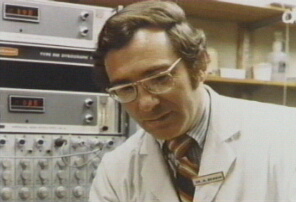Fight or Flight Response
Relaxation Response

Herbert Benson, M.D.

"a quick and unconscious neurological response to a perceived threat that stimulates defensive behavior."
"The relaxation response is a physical state of deep rest that changes the physical and emotional responses to stress."
Qualities of the Fight or Flight Response
Increased heart rate
Increased blood pressure
Increased respiratory rate
Higher pulse rate
Increased oxygen consumption
Increased blood lactate
Increased muscle tension
Rapid production of cortisol
Production of noradrenaline
Unconsciously elicited
Stress inducing
Outer focus of attention
Eyes wide open
Involuntary
External stimulus
Surprise, unpredicted, stimulus
Unplanned
Active internal dialog
Narrowing or focusing of attention
Sensory
Physical activity
Physical movement
From non-movement towards movement
Unlearned
Elicited by loud noise
Builds unhappiness
Increases rate of aging
Helps the individual survive and evolve
Most excitation of consciousness
Ready for most effort
Repeated elicitation may lead to use of narcotics and drugs
Experience of being at odds with environment
Attitude of resistance
Qualities of the Relaxation Response
Decreased heart rate
Decreased blood pressure
Diminished respiratory rate
Lower pulse rate
Decreased oxygen consumption
Decreased blood lactate
Decreased muscle tension
Reduction of cortisol
Reduction of noradrenaline
Consciously elicited
Stress releasing
Inner focus of attention
Eyes shut
Voluntary
Internal stimulus
Daily routine or habit as stimulus
Planned
Quiet, silent internal dialog
Expansion of attention
Senses transcended
Mental activity
Physiology at rest
From movement towards non-movement
Learned
Elicited by subtle sound then silence
Builds happiness
Decreases rate of aging
Helps the individual progress and evolve
Least excitation of consciousness
Least effort
Repeated elicitation diminishes need to use drugs
Experience of being at one with environment
Attitude of acceptance
Shared Qualities
Natural
Automatic
Innate, inborn
Effortlessly elicited
Protecting the individual
Can be elicited in anyone
Can be elicited by many means
Does not requires change in lifestyle
Does not require a belief that it works
Does not requires membership in an organization
Does not require following any person or doctrine
Discovered in Harvard Medical School Building C Lab
Discovered by a bespeckled Harvard physician and professor
 |
"A Comparison Between the Fight or Flight Response and the
Relaxation Response" |

